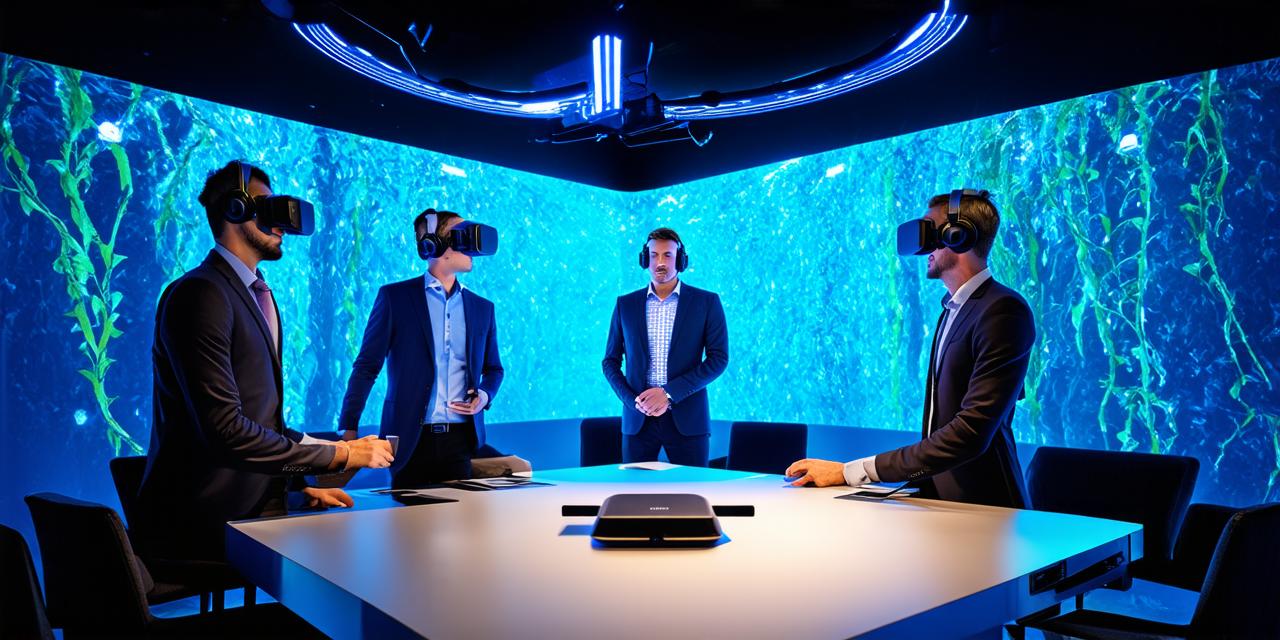
How can we improve a virtual reality business meeting?
Virtual reality (VR) technology has become increasingly popular in business settings, allowing companies to conduct meetings and collaborations in immersive, interactive environments. However, as with any new technology, there are challenges and limitations that need to be addressed to ensure successful and effective virtual reality meetings.
1. Set clear objectives and goals
Before starting a virtual reality meeting, it’s important to have a clear understanding of what you want to achieve. This includes defining the objectives, identifying the stakeholders involved, and deciding on the format and duration of the meeting. Having clear objectives will help ensure that everyone is on the same page and focused on achieving the desired outcomes.
2. Choose the right platform
There are many virtual reality platforms available, each with its own strengths and weaknesses. It’s important to choose a platform that meets your specific needs and requirements, based on factors such as participant capacity, security, and customization options. Some popular virtual reality platforms include Unity, Unreal Engine, and A-Frame.
3. Create an engaging and interactive environment
Virtual reality meetings can be more engaging and interactive than traditional in-person meetings, but only if they are designed with that in mind. This includes using features such as avatars, voice chat, and interactive elements like whiteboards, polls, and quizzes to encourage participation and engagement. It’s also important to keep the meeting format flexible and adaptable, allowing for spontaneous discussions and ideas.
4. Provide adequate training and support
Virtual reality technology can be complex and challenging to use, especially for those who are new to it. To ensure a smooth and successful virtual reality meeting, it’s important to provide adequate training and support for participants, including tutorials, user guides, and technical assistance. This will help ensure that everyone is comfortable with the platform and able to participate fully.
5. Foster collaboration and teamwork
Virtual reality meetings can be an effective way to foster collaboration and teamwork among remote teams. To do this, it’s important to encourage open communication, active listening, and constructive feedback. It’s also important to establish clear roles and responsibilities for each participant, and to recognize and reward their contributions.
6. Evaluate and improve
To ensure that virtual reality meetings are continually improving and evolving, it’s important to evaluate and analyze the effectiveness of each meeting. This includes gathering feedback from participants, analyzing engagement metrics, and identifying areas for improvement. By continuously refining and improving virtual reality business meetings, you can maximize their impact and effectiveness.
7. FAQs
Q: What are some common challenges with virtual reality meetings?
A: Some common challenges with virtual reality meetings include technical difficulties, lack of engagement, and difficulty in building trust among participants.
Q: How can I ensure that everyone is comfortable with the virtual reality platform?
A: To ensure that everyone is comfortable with the virtual reality platform, it’s important to provide adequate training and support, including tutorials, user guides, and technical assistance.
Q: How do I foster collaboration and teamwork in virtual reality meetings?
A: To foster collaboration and teamwork in virtual reality meetings, it’s important to encourage open communication, active listening, and constructive feedback, and to establish clear roles and responsibilities for each participant.

In conclusion, virtual reality technology offers many benefits for business meetings, including increased engagement, immersive environments, and remote collaboration. However, to ensure successful and effective virtual reality meetings, it’s important to set clear objectives and goals, choose the right platform, create an engaging and interactive environment, provide adequate training and support, foster collaboration and teamwork, and evaluate and improve.


